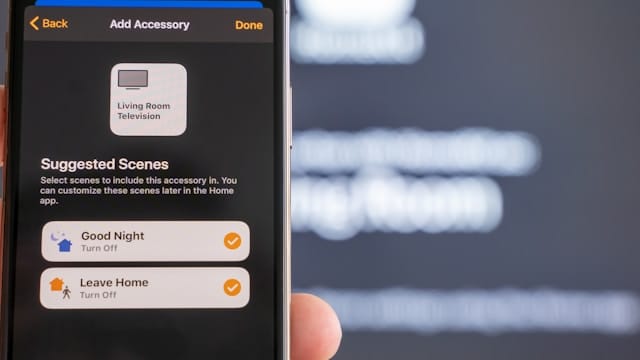DIY smart home projects are an exciting way to enhance the functionality and efficiency of your living space. With the rapid advancement of technology, creating a smart home has never been easier or more affordable. From simple automation tasks to more complex integrations, these projects can help you control your home environment, improve energy efficiency, and enhance your overall quality of life. In this article, we’ll explore ten inspiring DIY smart home projects that you can undertake to turn your home into a smart haven.
As you embark on these DIY smart home projects, you’ll discover not only the satisfaction of creating something useful but also the joy of living in a more convenient and efficient environment. Whether you’re a beginner or an experienced DIY enthusiast, there’s a project here for everyone. Let’s dive into the exciting world of DIY smart home projects and see how you can transform your space!
Understanding the Basics of DIY Smart Home Projects
Before diving into specific projects, it’s essential to grasp the fundamentals of DIY smart home projects. Understanding what smart home technology entails will provide context for the projects you’ll undertake.
What Are Smart Home Technologies?
Smart home technologies refer to devices and systems that connect to the internet, allowing you to monitor, control, and automate various functions in your home. These can range from smart bulbs and thermostats to full home automation systems. The main benefit of these technologies is convenience, as they allow you to control your home remotely via smartphone apps or voice commands.
Benefits of DIY Smart Home Projects
Engaging in DIY smart home projects has several advantages:
- Cost-Effective: Building your smart devices can be cheaper than buying fully integrated systems.
- Customization: DIY projects can be tailored to your specific needs and preferences.
- Learning Experience: These projects enhance your technical skills and understanding of smart technology.
- Satisfaction: There’s immense satisfaction in creating something that improves your daily life.
Choosing the Right Projects
When selecting which DIY smart home projects to pursue, consider your current skill level, budget, and the specific needs of your household. Some projects may require more technical know-how, while others are more accessible for beginners. Prioritize projects that interest you and that you believe will bring the most value to your home.
With a solid understanding of smart home technology and its benefits, let’s explore ten DIY smart home projects you can start today!
1. Smart Lighting Control
One of the simplest DIY smart home projects is creating a smart lighting system. Smart lighting allows you to control your home’s lighting remotely, set schedules, and even change colors.
How to Implement Smart Lighting
- Materials Needed: Smart bulbs, a compatible hub (like Philips Hue or Lutron), and a smartphone app.
- Instructions:
- Replace existing bulbs with smart bulbs.
- Download the corresponding app and follow setup instructions.
- Create lighting schedules or control lights remotely via your smartphone.
Expanding Your Smart Lighting
Once you have basic smart lighting set up, consider adding more advanced features:
- Motion Sensors: Integrate motion sensors to automatically turn lights on when you enter a room and off when you leave.
- Voice Control: Connect your smart lighting system to a voice assistant like Amazon Alexa or Google Assistant for hands-free operation.
- Color Scenes: Create customized lighting scenes for different activities, such as relaxing, reading, or entertaining.
This project not only adds convenience but also enhances your home’s ambiance and security.
2. Smart Thermostat
Upgrading to a smart thermostat is another impactful DIY project that can save you money on energy bills while enhancing comfort.
Steps to Create a Smart Thermostat
- Materials Needed: Smart thermostat (like Nest or Ecobee) and basic tools.
- Instructions:
- Turn off power to your existing thermostat.
- Remove the old thermostat and install the new one, following the manufacturer’s instructions.
- Connect to Wi-Fi and set up through the mobile app.
Advanced Thermostat Features
After installation, explore the following features:
- Geofencing: Set your thermostat to automatically adjust the temperature when you leave or return home.
- Energy Reports: Access detailed energy usage reports to identify opportunities for savings.
- Integration with Other Devices: Connect your thermostat to other smart devices, such as lights and blinds, for a cohesive home automation experience.
A smart thermostat learns your preferences and adjusts temperatures accordingly, optimizing energy use.
3. Automated Blinds
Automating your window blinds is a fantastic way to improve comfort and privacy while also adding a touch of modernity to your home.
DIY Smart Blinds Project
- Materials Needed: Smart blind motor kit, compatible app.
- Instructions:
- Measure your blinds and purchase a suitable motor kit.
- Follow installation instructions to attach the motor to your blinds.
- Sync the motor with your smartphone app for control.
Enhancing Smart Blinds Functionality
To maximize the benefits of your automated blinds:
- Light Sensors: Integrate light sensors to automatically open or close blinds based on sunlight levels.
- Scheduling: Set up schedules for your blinds to open and close at specific times, enhancing privacy and energy efficiency.
Automated blinds can be programmed to open and close at specific times, enhancing your home’s energy efficiency.
4. Smart Security System
A smart security system can significantly enhance your home’s safety. DIY options allow you to create a customized security solution.
Steps to Create a Smart Security System
- Materials Needed: Smart cameras, motion detectors, door/window sensors, and a hub.
- Instructions:
- Install smart cameras at key locations around your home.
- Set up motion detectors and door/window sensors.
- Configure the system through the manufacturer’s app to receive alerts and view camera feeds remotely.
Expanding Your Security System
Consider adding the following features for enhanced security:
- Smart Locks: Install smart locks on exterior doors for keyless entry and remote access.
- Alarm Systems: Integrate an alarm system that notifies you of any unauthorized access or unusual activity.
This project not only increases security but also provides peace of mind.
5. Home Automation Hub
A home automation hub acts as the central controller for all your smart devices, making it a crucial component of any DIY smart home projects.
Creating a Home Automation Hub
- Materials Needed: Smart home hub (like SmartThings or Hubitat).
- Instructions:
- Choose a hub that supports your devices.
- Connect your hub to your home network.
- Add devices to the hub through the app, allowing for centralized control.
Utilizing Your Home Automation Hub
Once your hub is set up, you can:
- Create Routines: Set up routines to automate multiple devices with a single command (e.g., “Good Night” could turn off lights, lower the thermostat, and lock doors).
- Integrate Voice Control: Connect your hub to a voice assistant for hands-free control over all your smart devices.
With a hub in place, you can create automated routines that enhance your daily life.
6. Smart Garden
If you love gardening, consider creating a smart garden that monitors soil moisture and automates watering.
Steps for a Smart Garden
- Materials Needed: Soil moisture sensors, smart watering system, and a smartphone app.
- Instructions:
- Place moisture sensors in your garden or pots.
- Connect the sensors to a smart watering system.
- Set watering schedules based on moisture readings via the app.
Advanced Smart Gardening Techniques
To take your smart gardening to the next level:
- Weather Integration: Use a weather station to adjust watering schedules based on forecasted rain.
- Plant Health Monitoring: Invest in sensors that monitor temperature and light levels to optimize plant health.
This project not only conserves water but also ensures your plants thrive.
7. Voice-Controlled Assistant
Integrating a voice-controlled assistant into your home is an excellent way to simplify daily tasks.
How to Set Up a Voice-Controlled Assistant
- Materials Needed: Smart speaker (like Amazon Echo or Google Nest).
- Instructions:
- Plug in your smart speaker and connect it to your Wi-Fi network.
- Use the corresponding app to set up your device and add skills or actions.
- Sync with other smart devices for voice control.
Maximizing Voice Assistant Functionality
Once your assistant is set up, you can:
- Set Reminders and Alarms: Use voice commands to create reminders and alarms for important tasks.
- Control Other Smart Devices: Integrate your voice assistant with lights, thermostats, and more for seamless control.
Voice assistants can manage your calendar, play music, control smart devices, and more, enhancing your overall convenience.
8. Smart Home Energy Monitor
Monitoring your home’s energy consumption can help you identify areas for improvement and save on utility bills.
Creating a Smart Energy Monitor
- Materials Needed: Smart energy monitor (like Sense or Neurio).
- Instructions:
- Follow the manufacturer’s instructions to install the energy monitor in your electrical panel.
- Connect to your Wi-Fi network and set up the app.
- Monitor energy usage in real-time and receive insights through the app.
Advanced Monitoring Techniques
To further enhance your energy monitoring:
- Device Tracking: Identify which devices consume the most energy and make adjustments accordingly.
- Usage Reports: Review usage reports to track trends and find opportunities for energy savings.
This project will not only enhance your awareness of energy consumption but also help you save money.
9. DIY Smart Mirror
A smart mirror can provide a blend of functionality and aesthetics, offering information like weather, news, and calendar events.
Steps to Create a Smart Mirror
- Materials Needed: Two-way mirror, tablet or monitor, and a frame.
- Instructions:
- Place the tablet or monitor behind the two-way mirror.
- Set up the display to show the desired information (weather, news, calendar).
- Frame the mirror and mount it on the wall.
Enhancing Your Smart Mirror
Consider adding these features to your smart mirror:
- Voice Activation: Enable voice commands to interact with the mirror.
- Touchscreen Capabilities: Use a touchscreen monitor for easy interaction.
This creative project will add a touch of modernity to your home while serving practical purposes.
10. Smart Pet Feeder
For pet owners, a smart pet feeder can simplify mealtime and ensure your furry friends are fed on schedule.
How to Build a Smart Pet Feeder
- Materials Needed: Smart pet feeder or components to create your own.
- Instructions:
- Choose a smart pet feeder or use a programmable timer and dispenser.
- Set feeding schedules via the associated app or timer.
- Monitor your pet’s food intake through the app.
Additional Features for Smart Pet Feeders
Enhance your pet feeder with:
- Camera Integration: Install a camera to check on your pet while you’re away.
- Portion Control: Program specific portion sizes to maintain your pet’s health.
This project ensures your pets are fed regularly, even when you’re not home, contributing to their well-being.
Conclusion
Engaging in DIY smart home projects is a rewarding way to enhance your living space while gaining valuable technical skills. From smart lighting and security systems to innovative solutions like smart mirrors and automated gardens, the possibilities are endless. As you explore these projects, remember to prioritize safety, conduct thorough research, and have fun along the way.
By investing your time and creativity into these DIY smart home projects, you’ll not only improve your home’s functionality but also enjoy the satisfaction of building something that enhances your everyday life. So gather your materials, roll up your sleeves, and start transforming your home into a smart haven today!






